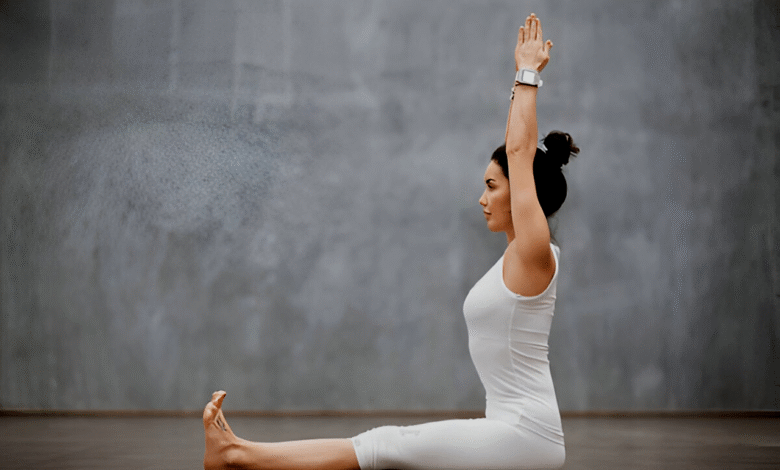How to Build a Beginner Workout Routine Without a Gym
Beginner workout routine without a gym Build strength at home with bodyweight exercises No equipment needed just follow our simple effective plan for fitness success.

Starting a beginner workout routine without a gym is easier than you might think all you need is your body, a little space, and consistency. Many people believe that building strength and endurance requires expensive equipment or a gym membership, but the truth is, bodyweight exercises can be just as effective. Whether you’re at home, in a park, or traveling, you can achieve great results with simple movements like push-ups, squats, and planks. The key is structuring your workouts properly and staying committed to your fitness goals.
In this guide, we’ll break down how to create a balanced and effective Workout Routine plan that requires no equipment. You’ll learn the best exercises for beginners, how to progress safely, and tips for staying motivated. By the end, you’ll have everything you need to build strength, improve flexibility, and boost endurance all without stepping foot in a gym.
How to Build a Beginner Workout Routine Without a Gym
Understanding the Basics of a Balanced Routine
A well-rounded workout routine should include strength training, cardiovascular exercise, and flexibility work. For beginners, focusing on fundamental movements helps build a strong foundation while reducing the risk of injury. Since you’re not using gym equipment, bodyweight exercises like push-ups, squats, and lunges become essential. These movements engage multiple muscle groups, improving functional strength and coordination.
Setting Realistic Goals
Before diving into your beginner workout routine without a gym, it’s crucial to define your fitness objectives whether that’s weight loss, muscle toning, or improving overall endurance as clear goals will help you tailor your workouts effectively. A well-balanced weekly plan might include an upper-body day focusing on push-ups, dips, and planks to build chest, shoulder, and core strength; a lower-body day with squats, lunges, and calf raises to target legs and glutes; a full-body circuit incorporating high-energy movements like burpees, mountain climbers, and jumping jacks to boost cardiovascular fitness; and an active recovery day.
Essential Bodyweight Exercises for Beginners
These five foundational bodyweight exercises form the cornerstone of an effective beginner workout routine without a gym, each targeting major muscle groups while allowing for modifications to match your fitness level. Push-ups (performed on knees for beginners or with explosive claps for advanced trainees) develop chest, shoulder, and triceps strength. Squats (from basic bodyweight to jump squats) build powerful legs and glutes, while planks (starting on knees if needed) create rock-solid core stability.
Incorporating Cardio Without Equipment
For an effective cardio workout without gym equipment, High-Intensity Interval Training (HIIT) delivers maximum results in minimal time by alternating short bursts of intense exercise with brief recovery periods. A powerful 15-minute HIIT session might include 30 seconds of Workout Routine jacks to elevate your heart rate, followed by 30 seconds of high knees for lower-body endurance, then 30 seconds of burpees for a full-body challenge, and finishing with 30 seconds of rest repeated for 3-4 rounds to torch calories and boost cardiovascular fitness. If you prefer lower-impact options, brisk walking, jogging, or cycling outdoors provide excellent aerobic benefits.
Using Household Items as Weights
Water Bottle Shoulder Presses for Upper Body Strength
Transform ordinary water bottles into makeshift dumbbells by filling them with water or sand. Hold one in each hand at shoulder height, then press upward until your arms are fully extended. This exercise effectively targets your shoulders, triceps, and upper back while allowing you to adjust resistance by changing the bottle size or fill level. Perfect for beginners, it’s a safe way to build strength without investing in Workout Routine.
Chair Dips for Arm and Chest Definition
A sturdy chair or bench becomes your workout tool for powerful triceps dips. Place your hands shoulder-width apart on the seat behind you, extend your legs Workout Routine, and lower your body by bending your elbows to 90 degrees before pushing back up. This bodyweight exercise strengthens not just your arms but also engages your chest and core. For added intensity, straighten your legs further or place feet on another elevated surface.
Backpack Squats for Lower Body Power
Turn your backpack into a weight vest by loading it with books, water bottles, or other household items. Wear it securely during squats to increase resistance and maximize glute and quad engagement. As you progress, adjust the weight by adding or removing items. This functional exercise mimics weighted squats at the gym while improving balance and core stability ideal for building lower-body strength anywhere. These creative adaptations prove you don’t need fancy gear to challenge your muscles Workout Routine.
The Importance of Flexibility and Mobility
Importance of Post-Workout Stretching
Stretching is a critical component of any workout routine as it helps prevent injuries by improving muscle elasticity and joint mobility. By dedicating just 5-10 minutes after each session to targeted stretches, you enhance blood circulation, reduce muscle stiffness, and accelerate recovery. Key stretches include the hamstring stretch (seated toe touch) to loosen tight posterior muscles, the quad stretch (standing leg pull) to relieve tension in the front thighs, and the shoulder stretch (cross-body arm pull) to alleviate upper-body tightness. Incorporating these stretches consistently not only boosts flexibility.
Yoga for Flexibility and Stress Relief
Beyond basic stretching, yoga serves as a powerful tool to deepen flexibility while simultaneously reducing stress. Unlike static stretches, yoga combines dynamic movements with mindful breathing, promoting both physical and mental relaxation. Poses like Downward Dog lengthen the hamstrings and spine, Child’s Pose releases tension in the back and shoulders, and Seated Forward Bend calms the nervous system. Regular yoga practice complements strength training by balancing muscle groups, Workout Routine posture, and preventing overuse injuries. Additionally, its stress-relieving benefits make it ideal for active recovery days.
Staying Motivated and Tracking Progress
Maintaining consistency in your beginner workout routine without a gym requires intentional strategies to stay motivated and track progress. Start by keeping a workout journal to log exercises, sets, and reps this creates accountability and lets you visibly measure improvements over time. Progress photos (taken weekly or monthly) provide visual proof of physical changes that might otherwise go unnoticed. Connecting with online fitness communities offers support, inspiration, and practical tips from others on similar journeys.
Read More: How Scientific Studies Measure Wellness and Mental Health
Conclusion
Building a beginner workout routine without a gym is not only possible but also highly effective when approached with consistency and smart planning. By leveraging bodyweight exercises, household items, and outdoor spaces, you can develop strength, endurance, and flexibility without expensive equipment or memberships. The key is to start with manageable workouts, focus on proper form, and gradually increase intensity to keep challenging your body.
Remember, fitness is a personal journey progress may be slow at first, but small, consistent efforts lead to lasting results. Whether you’re doing push-ups in your living room, squats in the park, or a HIIT session in your backyard, staying committed is what truly matters. With this guide, you now have the tools to create a sustainable workout routine that fits your lifestyle and helps you achieve your fitness goals no gym required. Keep moving, stay patient, and enjoy the process.
FAQs
Can I build muscle without weights?
Yes, bodyweight exercises like push-ups, squats, and pull-ups can effectively build muscle through progressive overload.
How long should a beginner workout last?
Aim for 30-45 minutes per session, including warm-up and cool-down.
How often should I rest?
Beginners should rest at least 1-2 days per week for recovery.
Do I need equipment for cardio?
No, activities like jumping jacks, running, or dancing provide excellent cardio without equipment.
What if I don’t see results immediately?
Fitness takes time track progress beyond the scale, like improved stamina or strength.









